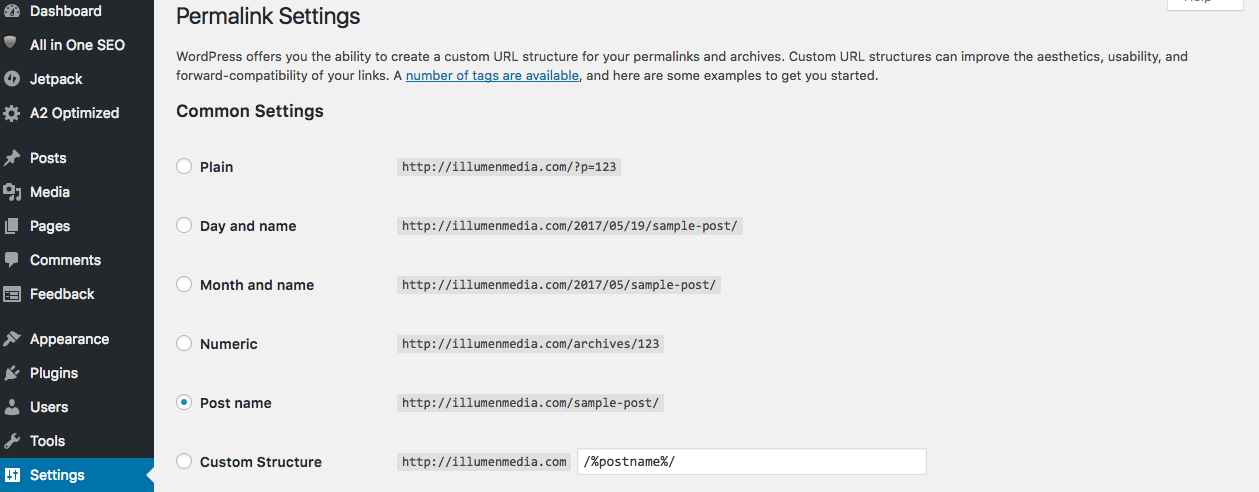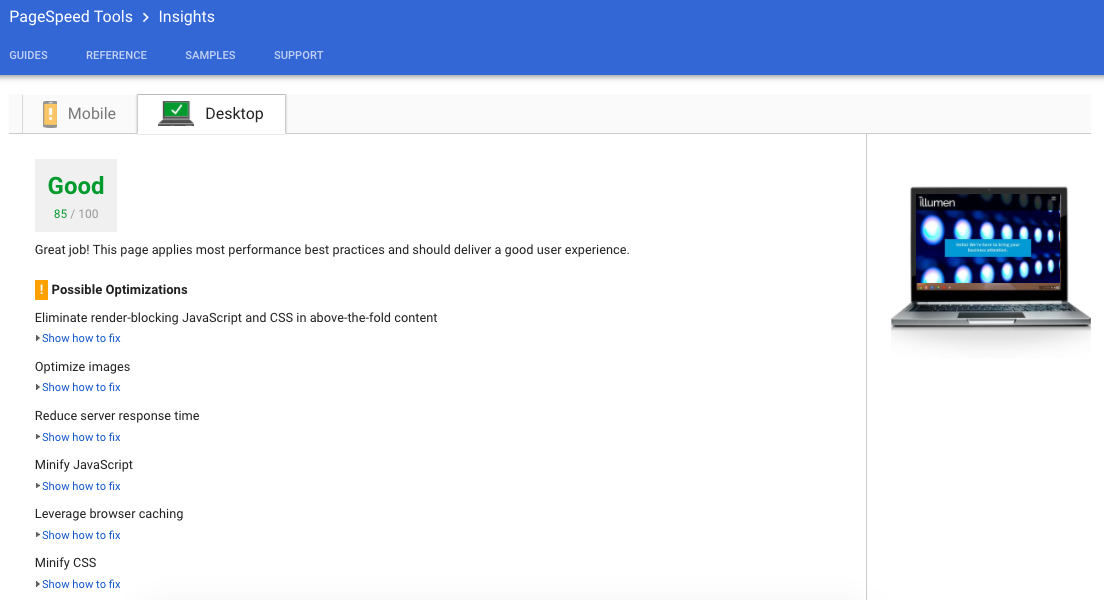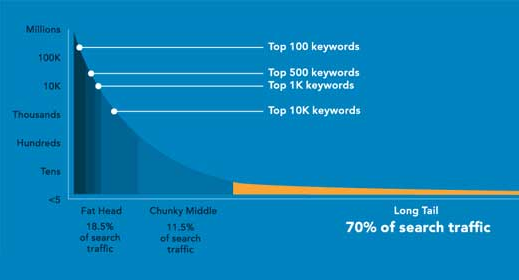20 Tips To Increase Search Engine Traffic Like A Pro

Learning a few tips to increase search engine traffic and taking action can completely change the growth of your business.
I’ve experienced this firsthand at my personal development blog TakeYourSuccess.com.
In just two years of the site’s existence I now get more than 1,750 views a day and more than 50,000 views a month—88% of these views are organic traffic from search engines!
And I’ve seen the results on the back end of my business from increased article shares and email subscribers, and revenue from book sales and course sales.
Most likely your business isn’t a personal development blog, but regardless of what space you’re in, you can utilize search engine traffic to transform your bottom line profits—even if you own a brick and mortar shop.
For example of success stories from SEO:
- HubSpot grew sales 1,193% in 3 years through blogging (small company before they blew up)
- AT&T made $47 million through their blog Networking Exchange
- American Express received 250,000 link back referrals to their site through Open Forum
The beauty of SEO is it can work for any company or individual who knows how to play the game right.
Do you know the rules and how to get on the first page of Google?
If not, it’s time we start. And if you think you have a good idea, then let this guide be a refresher—and you might learn a tactic or two.
Here are 20 search engine optimization tips to get your website in front of customers looking for your specific product, service, or information. You’ll soon be a SEO pro.
How To Increase SEO Traffic
1. Add your company to Google My Business
For starters, you’ll want to set up a business account on Google My Business to boost your SEO.
This will help your local search engine optimization and give customers access to important information like your phone number, open hours, location, and contact information.
After all, if people from your town don’t find your company when they search for “local nail salon,” for example, business is going to your competitors.
How much money is it costing you to not be on the first page—or the first result—of that search?
Setting up a Google My Business listing also protects you from angering visitors who show up to your restaurant at 9:05 PM, for example, and see it closed at 9 PM so they vow to never come back. With the hours of operation on Google, it’s no longer your fault.
You’re also able to add pictures of your business and attract customer reviews. Adding this kind of information to your online presence builds trust with your audience and that goes a long way to bring in more business.
2. List your business on Bing Places For Business
Surprisingly 1 in 5 people use Bing for their search needs according to CNN. I know, I’m shocked too.
So just as you listed your business on Google, you’ll want to do the same for Bing.
The process is simple like Google. Just go to Bing Places, and then add your:
- Business name
- Address
- Phone number
- Website
- Store hours
- Office or employee pictures
Then make sure you verify your address with the code they send you through the mail and you’ll be good.
To capitalize on setting these up and possibly transform your business, execute action step number three below.
(These first two SEO tips assume your business has a physical location. Online businesses can’t register for Google My Business or Bing Places For Business.)
3. Get online customer reviews
You know how you set up that Google My Business listing? An excellent way to increase your local SEO is to build up a large quantity of online reviews for your business.
Online reviews account for roughly 10% of your search rank according to Moz.
And when you consider the fact that 72% of customers have to read an online positive review before they take action, doing this becomes a top to-do list item for your business.
How do you get these reviews? There are many ways to execute so I’ll share the high-level ideas.
You first must have a strategy of how and when you’re going to ask for reviews. If you’re a restaurant, do you put it on the receipt? Do you give them 10% of their next visit for an honest review? Do you get their email and send them the link?
Get creative with this and more people will be willing to share about their experience.
And if you receive a negative review, always reply politely and try to be accommodating. It goes a long way to diffuse the negativity from other people who see it. See this article for more information.
4. Change your URL structure
It’s amazing how something so important to your search traffic can go awry by accepting your website’s default permalink structure.
What’s your permalink URL structure? It’s how the back end of your URL displays after your regular domain name.
And having it display the post title or keywords will improve your page’s SEO juice over random numbers.
For example, on this page, our URL structure is search engine optimized: robbenmedia.com/tips-to-increase-search-engine-traffic.
On the other hand, our SEO would take a hit if the URL appeared as: robbenmedia.com/?p34=$22-07%398.
To fix your permalinks on WordPress, in the admin bar, click ‘Settings,’ ‘Permalinks,’ ‘Post name,’ and scroll down to select ‘Save Changes.’

One last tip here is to add the keyword in the URL structure instead of the entire blog post title to get more SEO juice out of it.
5. Test your website speed
Like many elements on this list, site speed affects how users interact with your site and therefore your SEO rank.
If your page fails to load fast enough, you and I know that the person browsing is going to click back and find a website that loads properly. And get this: just a 1 second delay on your page load time costs you 7% less conversions.
People are too impatient to wait for your slow site. As your slow loading speed tests their patience they’ll think, “Hurry it up already. Wow, this is so slow. Alright, screw it! I’m out.”
That quick bounce hurts your SEO and your bank account, while directly helping your competition. (See how to reduce bounce rate to improve this.)
Because it has an immediate effect on how your website performs and converts traffic into leads and customers, improving your website speed needs to be a top priority!
To test your website speed, use Google’s PageSpeed Insights and Pingdom’s Website Speed Test.
Once you type in your site speed you’ll receive a report like this from Google:

And a similar one from Pingdom.
Make the necessary changes and retest your site!
6. Utilize long-tail keywords
Sure those keywords that get 250,000 searches per month are appealing, but they’re nearly impossible to rank high for because these are also the most competitive keywords.
So competing for one- or two-word keywords when your site doesn’t get a lot of organic traffic is equivalent to going in the ring with Mike Tyson during his prime. You have no shot of winning.
For example, you’re never going to climb ahead of the search rankings for the term “business news” when you’re competing against WSJ, CNN, Reuters, Fox, and Forbes.
Their sites have been around too long and hold too much website authority for you to rank ahead of them (even if you made it your life’s mission to get ahead of them on Google).
But where their may be an opportunity to get organic traffic is through a long-tail keyword—a keyword that has 3 or more words—like “business news for teenagers.”
Long tail keywords are the way to get organic traffic that’s still targeted. For example, this graph from WPBeginner shows the power of long tail keywords.

And ironically while targeting something like “business news for teenagers” as your keyword, you will also start to rank for business news. That’s how you work smart!
So you’ll receive more organic traffic if you do SEO keyword research to find long tail keywords.
7. Create a content strategy
You could just write random blog posts and hope they do well on search engines.
And you’d honestly get some lucky traffic that way, but it might not be targeted or profitable traffic.
Or you could spend the time to create a content strategy to target specific keywords that will make the most dramatic difference for your business. Even better, you can set monthly traffic goals to hold yourself accountable.
I strongly recommend the latter.
Because focusing on highly targeted and profitable keywords is definitely the way to go in the short-term and long-term.
This content strategy gives purpose and direction to your website traffic, not just overall traffic where the visitors aren’t interested in buying.
For an example of a content strategy (and using long-tail keywords), let’s say you own an accounting firm.
The pillar keyword of your content strategy might be “local accountant.” And to get ranked for that, you’re going to write articles with the keywords:
- Why hire an accountant
- Accounting for small business
- I need an accountant
- Do I need an accountant
- What to look for in an accountant
- Accountant for small business cost
This is the beginning of your content strategy.
Planning your articles out not only helps your company site’s SEO, but also helps the writers stay focused and organized on what to right in the present and future.
Plus, you have to have in mind that the the world of SEO is constantly changing as we are speaking. You need to be always up to date with the SEO Strategies that will help you rank your website high on search engines. Read this definitive guide to SEO strategy to get a grip of what I am talking about – here.
8. Master the art of headlines
They say content is king, which part of me agrees with. But couldn’t we make an argument that the headline is king?
After all, isn’t that the gatekeeper before anyone gets to the content? A report shows that 80% of people read the headline but don’t read the rest of the content.
So if your headline sucks on social media or a Google search result, not a lot of people are going to click—which defeats the purpose of writing the post in the first place.
Get serious about mastering the art of how to write enticing headlines. It’s well worth it in the short-term and long-term for your business.
I recommend you (bookmark and) check this resource for ideas each time you’re trying to come up with a new blog post title: 49 Headline Formulas to Skyrocket Conversions.
Then keep drafting new headlines until you find a winner that works for SEO and grabs people’s attention. To be sure it’s a good one, make your final tweaks using this headline analyzer.
Many people spend all their time writing their blog post and then give two seconds to come up with their headline—not smart. Go all out on both the writing and headline.
9. Use headings
This tip is simple and effective: Use heading tags (Heading 1, Heading 2, and Heading 3) to help outline your page and break it down into more digestible content.
Some beginner bloggers will write their post in all paragraph text and it doesn’t work well. With any long post, the reader will need to know the key summary and they do that through reading your headings.
So for best practice, use:
- H1 only once on the page for the page title
- H2 to break your page down into a summarized outline
- H3 for the subheadings in the H2, most often used for lists
- For the most part, you can ignore using a H4, H5, or H6
Your pages will now have a solid outline for both the reader and Google crawl bots to scan and leave with a positive impression.
10. Write 2,000+ word articles
Back in the early days of blogging you could write a 500 word post, call it a day, and get a bunch of traffic. (That’s why it pays to be on platforms in the beginning.)
Now your 500 word post will struggle to get on the fifth page of Google, let alone the first, as longer articles with 2,000 or more words are the victors.
And data shows Google puts longer content on the first page. Take a look at this graph of the average word count for the top ranked articles:

It’s clear that articles over 2,000 words tend to rank highest on Google.
Some tips to write longer content is to make statements, provide evidence to back them up, and then suggest takeaways or going forward actions for your audience to take.
And it helps to add more graphs, images, and videos if you’re aiming for truly spectacular content.
11. Post at least once a week
Google rewards sites that publish consistent, fresh content by ranking them higher for specific searches and more keywords.
Meaning consistent posting turns into more leads and sales for your company.
Plus fresh content means you also get to:
- Stay in contact and deliver regular value to your audience
- Increase website authority
- Execute more internal linking
- Build your email list and social media channels
- Show your business is active and committed
The more you publish quality content, the more traffic comes to your site. That should be incentive enough for your business to post at least once a week.
If you’re up for it, publishing twice a week would be even better. But you don’t want to reach burnout and stop blogging for good.
For all of those SEO and general business benefits, it pays to be consistent.
12. Focus on internal linking
Internal linking means linking from one page on your site to another page. By doing that you’re giving the page you link to a vote of confidence that helps it rank higher in Google.
And the reason I love internal linking is because it’s 100% in your control plus it significantly boosts your site’s SEO.
For example, ever wonder how Wikipedia ranks near the top of almost every search term? Besides the ridiculous amount of content they have, they’re experts at internal linking.
So take some time to make relevant internal links from older posts to newer ones and recent posts to older ones. When you add natural internal links, your SEO is sure to improve over time.
Just don’t over do this and have every other phrase be a link to another page on your site. That’d hurt the reader experience and be penalized by Google.
13. Add to older posts
You know those older 400-word posts where you got busy, lazy, or ran out of things to say?
Hate to break it to you, but those aren’t going to get anywhere close to the first page of Google.
There’s no way it can compete with similar articles that are 2,000 words or more. Because these articles will provide way more value by length alone.
Another strategy to build your SEO is to go back and edit your older posts that leave a lot to be desired.
Expand on the ideas. Add more research or examples to prove your points. And make a stronger argument. Maybe even edit the title or add a few more links or images to improve the blog post.
It’s more work, sure, but less work than completely rewriting something you’ve already covered.
14. Fix or remove broken links
Broken links are a website no-no because they hurt both your user experience and your SEO rankings.
When you link to something and the visitor gets a broken link, the readers and website crawlers are going to question your company’s credibility.
Depending how bad of an broken link error it is (like on your homepage or navigation menu), they may question if you’re still in business.
The good news is this is an easy fix that you can get done in a few minutes through a broken link tool.
My favorite WordPress plugin for this is called Broken Link Checker. It emails me any time I have a broken link on my site, allowing me to quickly fix or remove it.
I appreciate this because otherwise I might never know the link was broken in the first place.
If you don’t have a WordPress site or just want a website tool then use Dead Link Checker to scan your site for dead links.
Once you find the bad links, just replace them with a new link or unlink it altogether.
15. Double dip with video
If you didn’t know that Google owns YouTube, now you do. And because of this relationship, many YouTube videos rank on the first page of Google if they’re optimized for their title, description, and tags.
But to really get the most SEO out of your content, I recommend pairing a blog post with a video. This is what I mean by “double dip.”
Plus, your audience watching 1 minute of video equals 1.8 million words according to the Forrester Research. I don’t know if video is that powerful, but I do know adding video in your SEO strategy will make a big difference.
And it’s not all about SEO. Providing video means you’re catering to both audiences: those who prefer watching and those who prefer reading. That’s good customer service!
16. Add a share bar
This is another easy yet effective action to build your company website’s SEO.
Adding share icons to your posts will make it easy for your audience to spread the word about you. And social shares have already become more important to SEO (and I have a feeling they will continue to matter more in the future).
Here are some quality social share plugins for WordPress that all are free:
And I’d recommend you keep it simple by having share buttons for Facebook, Twitter, and one other platform that your audience uses most—whether that’s email, LinkedIn, Pinterest, etc. Anymore than three options to share could be overwhelming for your audience so they don’t share.
Remember to invite your audience to share your posts. A little nudge often helps.
17. Seek guest posts
Maybe the quickest way to get a new crowd of traffic on your site is to guest post on a similar niche website.
Guest posting is a tried and true method to grow your audience, email list, and usually sales.
That’s great, however another beauty of guest posting is you get a solid external link that goes back to your site. Receiving external links is huge for ranking high in Google and building website authority.
For the immediate traffic and long-term organic traffic from linking back to your site, make an effort to guest post.
For some tips on how to be a successful guest blogger, do this:
- Provide unique content
- Make it easy for the website owner to publish
- Write your best material
- Share the post like it’s your own
- Thank them and try to collab together in the future
18. Execute a roundup post
A roundup post – like this one on the best tips to promote a website – may be the single best tactic to land organic traffic, build buzz, get links to your site, and develop industry influence all at once.
If you’re not familiar with the term, a roundup post is when you get a panel of experts in your field to answer a question you sent to them.
For example, if I was a restaurant owner, I’d get 10 chefs together and ask them to answer, “How do you cook your ribs and why?”
The way you execute a roundup is like this:
- Come up with an interesting question for your audience to read
- Reach out to experts and ask them to answer it
- Publish the answers on your website
- Ask the people you took the responses from to share it on their social media channels
What happens is once the article is published on your site, you send it to the people you interviewed and ask them to share it. They will because it makes them look good to appear in this post as an expert, and now this post reaches a whole lot more people than normal.
And roundups are interesting to your average reader because they get unique answers from different people, so they’re more likely to comment or share it.
Just make sure you get quality responses from the people you interview, then this is sure to be a success.
For example, this internet security company did a nice job of doing a roundup post—and it smartly makes their products and services seem more valuable.

19. Develop relationships with journalists
Many journalists can give your website a powerful backlink and a spike of traffic if you know the right ones.
For example, a highlight on Forbes, Business Insider, or Inc would do wonders for your business, wouldn’t it? Not only the surge of traffic and orders, but also using that as a credibility marker in future conversations and promotional material.
Here are some action steps to make friends with local journalists:
- Follow them on social media (Twitter, Instagram, and Facebook)
- Regularly engage their content by responding with interesting comments and thoughtful questions
- Invite them to coffee or lunch to learn more about what they do and talk about your company
- Keep the relationship warm by staying in touch with them
Once the relationship is built, you can ask if they will feature your business in an upcoming story. But you need to think of how that would give them value and make their life easier. Showing the power of your brand in a press kit can only help this conversation.
And then hopefully you’ll get a quality press mention that could send serious traffic to your website.
20. Never quit posting content
This isn’t a tactic as much as it’s a mindset and commitment to your company.
If you’re serious about using content marketing to drive leads and customers to your business (which is smart), then you can’t go weeks or months without blogging.
Your regular visitors will turn sour. And your organic traffic will nose dive.
For example, WordPress and SEO expert Robert Ryan quit posting for over 8 months and immediately saw a 32% drop in overall traffic.
And on top of that, Ryan saw a 42% drop in organic traffic during this no-posting experiment.
Clearly Google downgraded his site after he stopped blogging. That’s the only explanation.
Here’s the lesson: In the beginning when you don’t get much traffic, through the dog days of building up your content until you’re successful with organic traffic, and finally when significant sales come from online traffic, always keep publishing valuable content to stay relevant in SEO world.
Get SEO Working For You
The fact of the matter is that thousands, if not millions, of people every month are searching for the product or service your company offers.
And they’re either going to your competitors or to you. Which do you prefer?
With a strong website presence through utilizing the tips above, you’ll get more search engine traffic, customers, and dollars. It’s not a stretch of the imagination to say more traffic directly equals more profits.
That’s why we encourage you to add content marketing and SEO as a main marketing strategy in your overall business plan.
When you take time to implement some of these SEO actions, you’ll certainly notice the difference over time—sometimes immediately.
P.S. Feeling too busy to execute SEO on top of all your other responsibilities as a business owner? Consider working with us to develop a customized SEO plan that makes your company more money.



